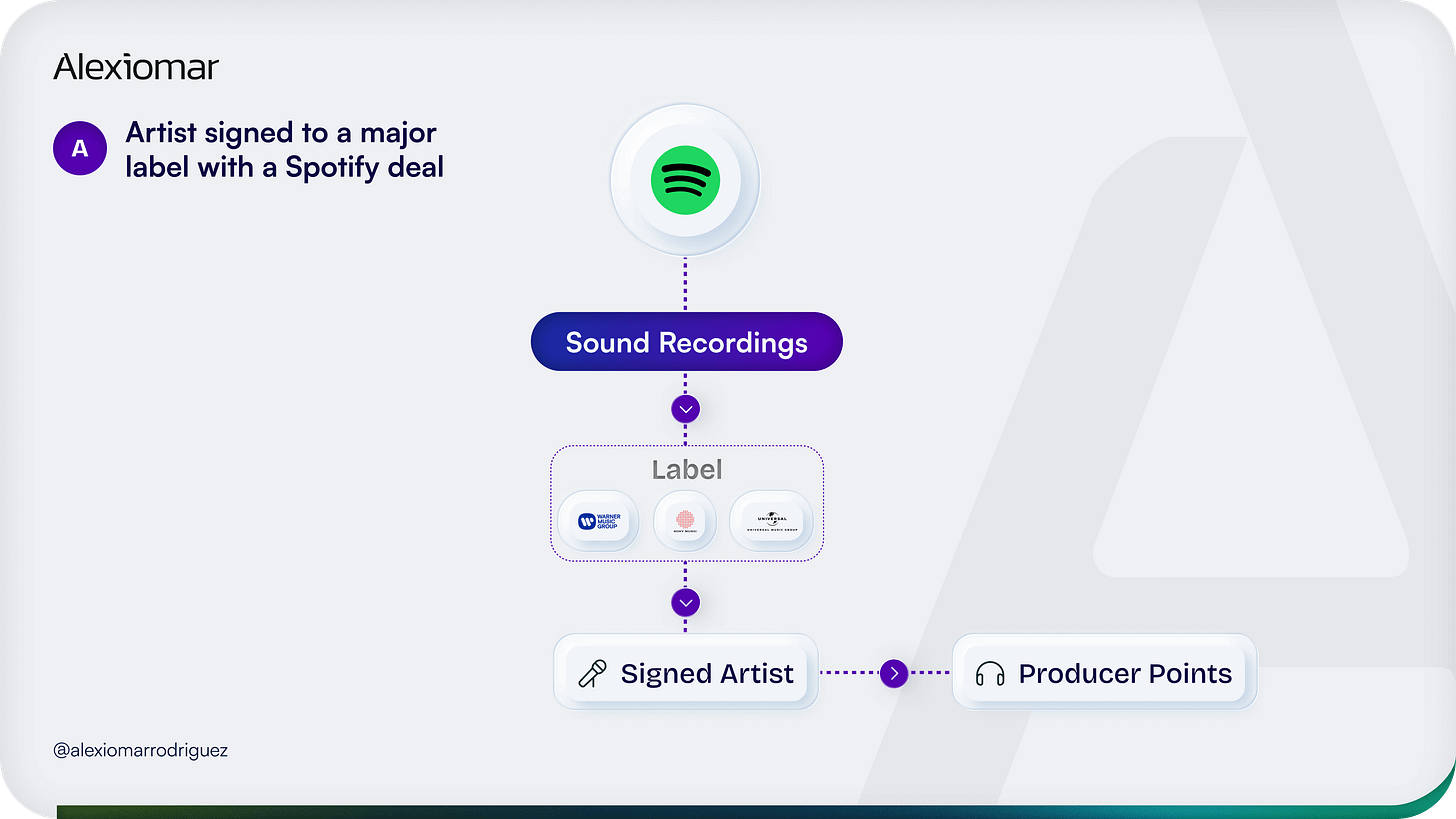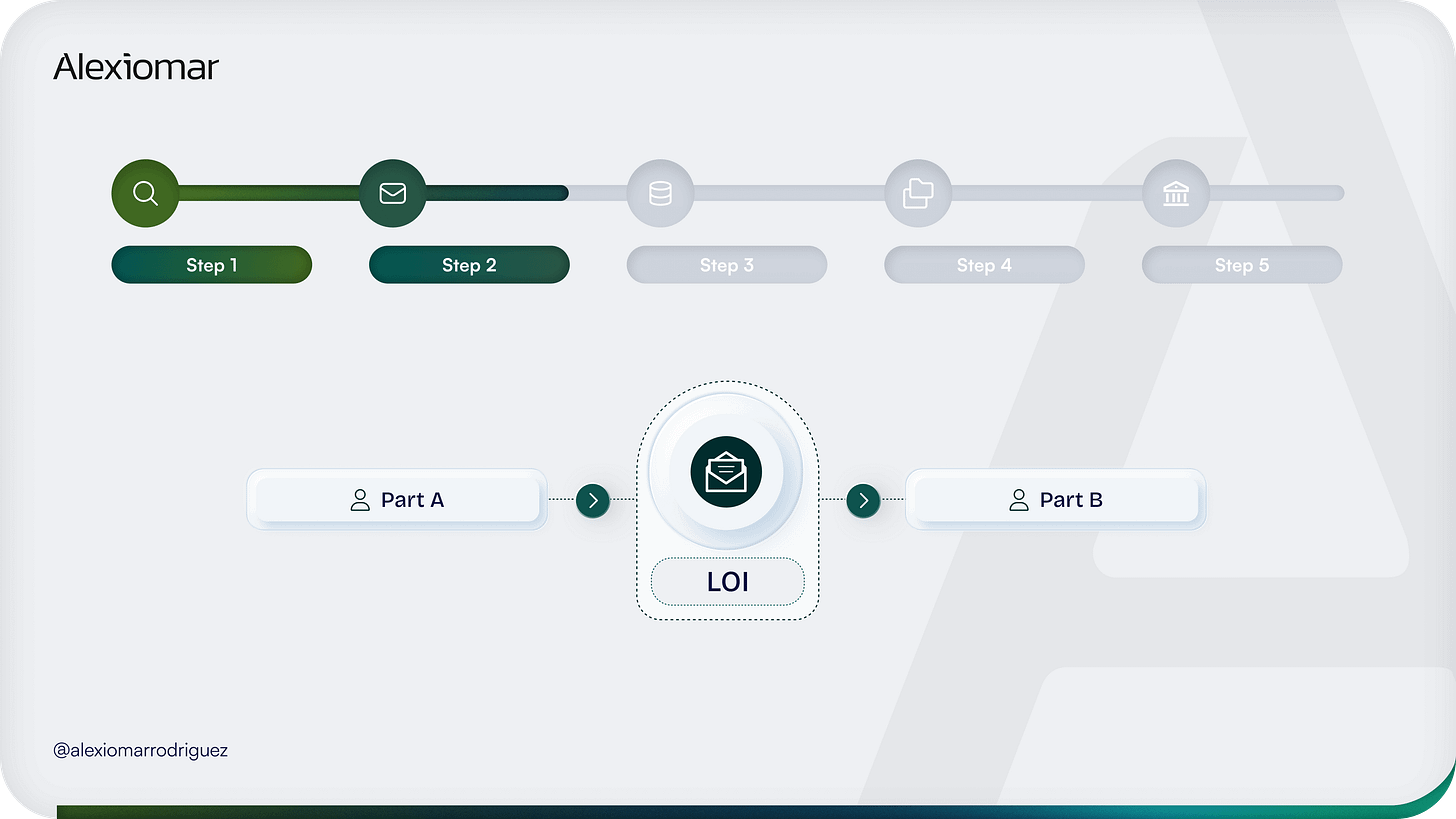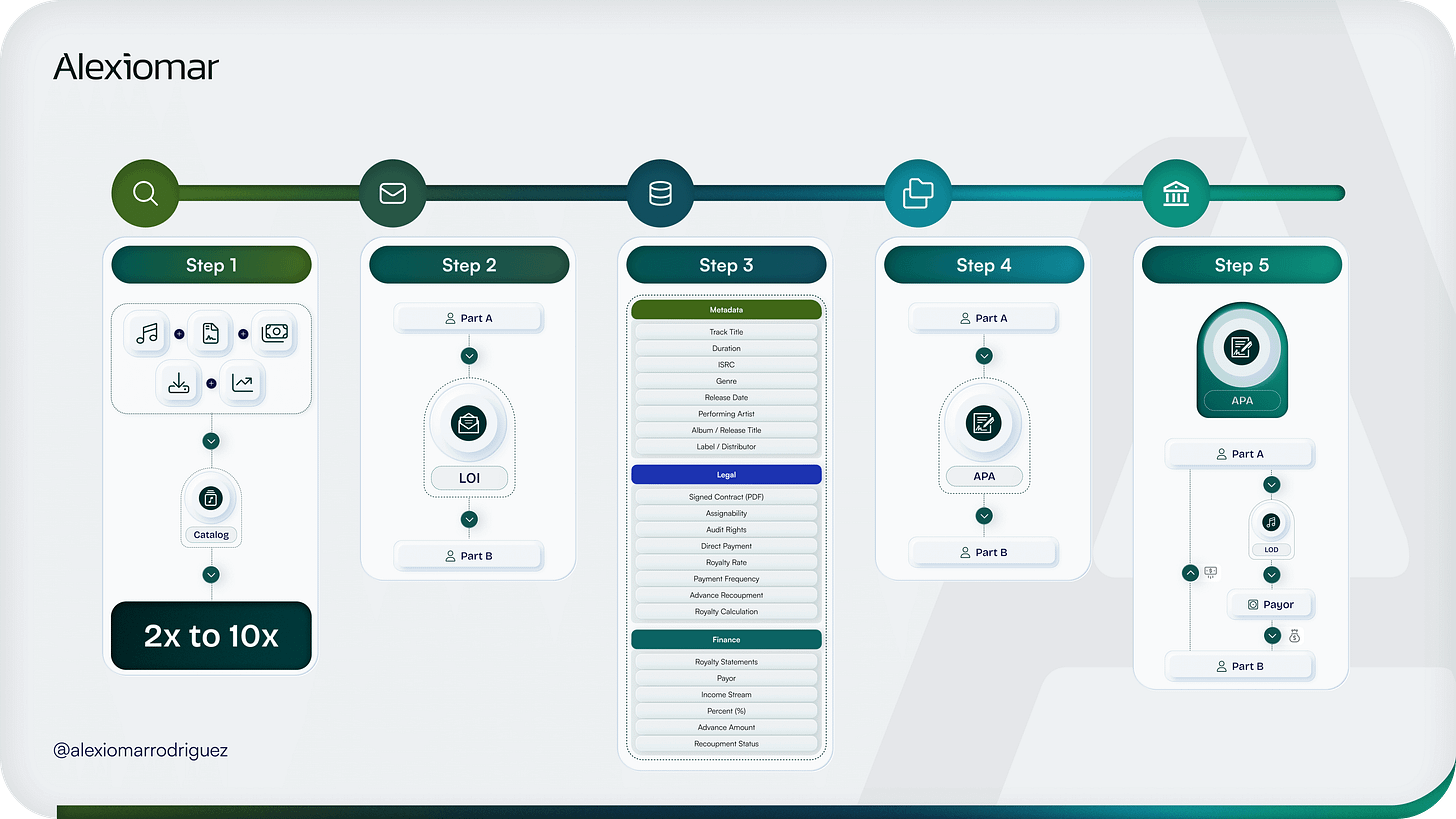How to Buy Producer Royalties
Checklist to streamline your next producer overrides acquisition.
Hello, and welcome to this week’s edition of this newsletter:
How to Buy Producer Royalties
If you are a catalog buyer looking to purchase producer royalties, this guide will help you go from zero to hero while avoiding costly mistakes.
In this issue, you will learn the fundamentals in plain language:
How producer royalties work,
Why buy producer royalties,
What every music catalog needs to understand when purchasing producer royalties.
The Problem
There is little to no information on how music catalog acquisitions actually work. When I started, I had to borrow from the M&A playbook and figure out what really applies to the music industry.
How Producer Royalties?
Producer royalties are money generated by the exploitation of the sound recording. Producer royalties are also knowns as producer points or producer overrides.
Often, producer royalties are calculated based on the artist’s share.
Example: A sound recording generates $10,000 in royalties.
Label / Artist Split: 80/20
Producer gets 1% "all-in"
Breakdown:
Label: $8,000
Artist: $2,000
Producer: $20
There are three common scenarios.
Three typical cases:
A – Artist signed to a major label
Platforms pays the label
Label pays the artist
B – Self-released artist
Platforms pays distributor
Distributor pays artist
C – Artist signed to an independent label
Platforms pays the label's distributor
Distributor pays the label
Label pays the artist
In all three scenarios, producer points (overrides) usually come from the artist's share.
Why buy Producer Royalties?
Passive Income: Royalties are low-touch. Labels handle payments.
No Marketing: You buy income, not copyright. No need to pitch or promote.
Piggyback on Success: Major labels or superstar artists drive value.
Consistent Cash Flow: Reliable revenue without active management.
How to Buy Producer Royalties?
Step 1 – Identify a Potential Seller
Key factors that affect valuation, according to music fund advisor Alex Gramatzki:
Age of catalog
Last 3 years earnings
Contractual rights
Monthly Spotify listeners
Genre
Type of rights
Upcoming Events or releases
Song popularity (streams)
Valuation multiples range from 2x to 10x or more.
Step 2 – Send a Letter of Intent (LOI)
Summary of proposed terms:
Assets
Purchase Price
Holdback
Closing Date
Net Price
Representations and Warranties
Confidentiality
Exclusivity
Conditions to Close
Additional Diligence
Royalty Handling Post-Close
Expiration
Governing Law
Costs and Expenses
Step 3 – Due Diligence
Metadata
Track Title
Duration
ISRC
Genre
Release Date
Performing Artist
Album / Release Title
Label / Distributor
Legal
Contract type (Producer Agreement)
Key clauses:
Assignability
Audit Rights
Direct Payment
Royalty Rate
Payment Frequency
Advance Recoupment
Royalty Calculation
Finance:
Royalty Statements
Payor
Income Stream
Percent (%)
Advance amount
Recoupment status
SoundExchange LODs and Assignability
Some producers receive royalties from SoundExchange as featured artists, typically via a Letter of Direction (LOD). These featured artist royalties are payable to individuals who directly contributed to the recordings—such as producers, mixers, or engineers.
While the statute doesn’t explicitly prohibit these individuals from assigning their royalty rights to third parties, including institutional buyers, SoundExchange imposes an operational limitation: it will only honor LODs directing payment to recipients who are themselves creative participants. In other words, SoundExchange will not redirect payment to catalog buyers, funds, or other non-creative entities—even if there is a valid contractual assignment.
As a result, any assigned SoundExchange income must flow through the individual payee (the producer) and then be remitted contractually to the buyer. Some music investors are comfortable acquiring these rights with that structure in place, but they typically require strong representations, covenants, and post-closing compliance mechanisms to manage the administrative and enforcement risks. Others choose to exclude this income from their valuation models altogether for simplicity and certainty.
Step 4 – Asset Purchase Agreement
The Asset Purchase Agreement is the legal document detailing the purchase of override rights.
Here are the typical clauses I include:
Purchase and Sale of Override Rights
Transfer of Rights
Exclusivity and Perpetuity
Price and Payment Method
Closing Obligations
Grant of Rights
Seller Covenants
Representations and Warranties
Post-Closing Obligations
Power of Attorney
Miscellaneous (Law, Taxes, Signatures, etc.)
Schedules:
A: List of Tracks & ISRCs
B: Letter of Directions (Payor)
C: Seller Payment Instructions
Step 5 – Closing + Post Closing
Execute the APA
Make initial wire transfer
Send LOD to the payor
Purchaser begins receiving payments
Conclusion
Buying producer royalties is a smart way to generate low-maintenance income. With the right checklist and due diligence, you can avoid mistakes and close profitable deals.
Want help with catalog acquisition?
Reach out at alexiomar@xiola.co













🔥🔥🔥